Cold/Hot Mirrors
Back to Design Page
Cold Mirror - Dichroic reflector that reflects visible light and transmits infrared (IR) light producing a cool beam of reflected visible light.
Hot Mirror - Dichroic reflector that reflects infrared (IR) light and transmits visible light. Can be used as a filter to create a cool beam of transmitted visible light.
![]()
The cold mirror utilizes a long-wavelength pass filter stack design
of the basic form:
![]()
where, H = QWOT of high index material, or TiO2 (nH
= 2.4 @ 550nm)
L = QWOT of low index material, or SiO2 (nL
= 1.46 @ 550nm)
and, the substrate is glass (nS
= 1.52 @ 550nm)
If the designer desires high reflectivity over the entire visible
spectral region
(400 - 700nm), one stack of the above design
(where the QWOT is centered at l=550nm)
will not be sufficient...see below.
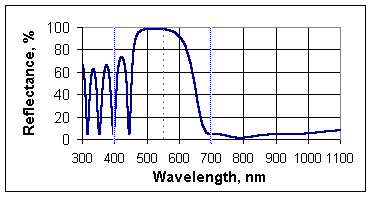
![]()
Instead, the designer needs to overlap stacks so that the high reflectivity regions overlap to cover the entire visible spectrum...see below.
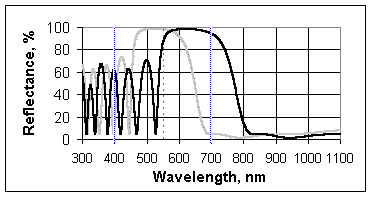
![]()
overlaps a stack at longer wavelengths
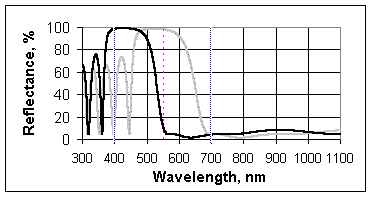
![]()
overlaps a stack a shorter wavlengths
So, if we put all three stacks on our substrate we get:
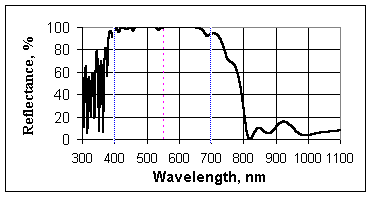
![]()
***Here's a little designer tid-bit...
If one adds a HWOT (see terminology) layer of L to the top
of the design,
the IR reflectivity will be minimized. See below.
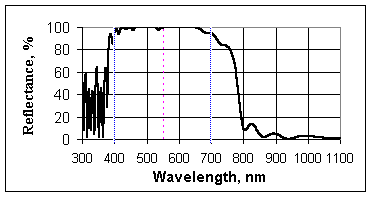
![]()
![]()
The hot mirror utilizes a short-wavelength pass filter stack
design
of the basic form:
![]()
where, H = QWOT of high index material, or TiO2 (nH
= 2.4 @ 550nm)
L = QWOT of low index material, or SiO2 (nL
= 1.46 @ 550nm)
and, the substrate is glass (nS
= 1.52 @ 550nm)
If the designer desires low reflectivity over the entire visible
spectral region
(400 - 700nm), one stack of the above design
(where the QWOT l=550nm) is about all that one can use.
There is a harmonic of high reflectivity in the ultraviolet region
that prevents the designer from overlapping stacks...see below.
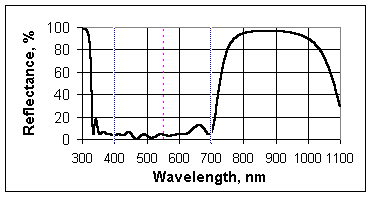
![]()